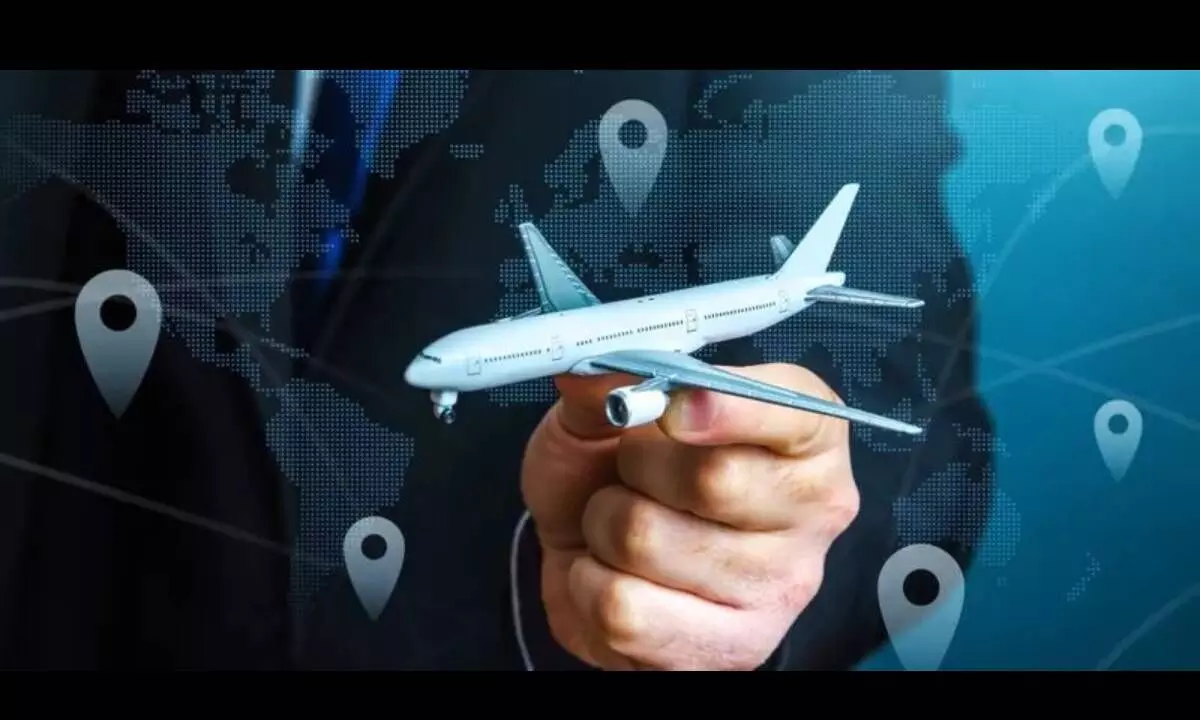Amid fragile growth prospects, airline industry strategizes for the future
Connectivity and convenience are much less important to leisure travelers, who prioritise cost
image for illustrative purpose

The International Air Transport Association (IATA) has predicted that the 2023 profitability will touch $9.8 billion (a 1.2% net profit margin) which is more than double the previous forecast of $4.7 billion (December 2022).
Airline industry operating profits are expected to reach $22.4 billion this year, much improved over the December forecast of a $3.2 billion operating profit. It is also more than double the $10.1 billion operating profit estimated for 2022.
Some 4.35 billion people are expected to travel in 2023, which is closing in on the 4.54 billion, who flew in 2019.
Cargo volumes are expected to be 57.8 million tonnes, which has slipped below the 61.5 million tonnes carried in 2019 with a sharp slowing of international trade volumes.
Total revenues are expected to grow 9.7% year over year to $803 billion. This is the first time that industry revenues will top the $800 billion mark since 2019 ($838 billion). The expense growth is expected to be contained to an 8.1% annual increase.
Economic uncertainties have not dampened the desire to travel, even as ticket prices absorbed elevated fuel costs. After the huge Covid-19 losses, even a net profit margin of 1.2% is something to celebrate! But with airlines just making $2.25 per passenger on average, repairing damaged balance sheets and providing investors with sustainable returns on their capital will continue to be a challenge for many airlines.
The economic and geopolitical environment presents several risks to the outlook. With just $22.4 billion of operating profit (2.8%) standing between $803 billion of revenues and $781 billion in expenses, industry profitability is fragile and could be affected (positively or negatively) by a number of factors.
Specific consideration should be given to inflation-fighting measures. Central banks are calibrating the best levels for interest rates to have a maximum cooling effect on inflation, while avoiding tipping economies into recession. An early or lower end to rate rises could stimulate markets for a stronger year-end outlook. Lest one forgets, the risk of recession remains. Should recession lead to job losses, the industry’s outlook could shift negatively. Many airlines have reduced unit costs by steadily gauging up their fleet, especially in domestic markets. But this strategy has its limits.
In an uncertain demand environment, making the right trade-off between total trip cost and per seat cost will be critical. Fleet flexibility, both on mix of aircraft types and number, and real-time scheduling have never been more important.
The aircraft market will be a buyer’s or lessee’s market. Excess supply of aircraft will continue to force lessors to offer “power by the hour” and other deals. OEMs will likely revert to aggressive discounting to keep production lines moving, while lessors with older aircraft will have to be enterprising in the secondary market as jet fuel prices will keep rising.
In short, for both OEMs and lessors, the market will be intensely competitive. Airlines must look to minimize the total cost of ownership and consider maintenance and operating costs, not just purchase or lease costs.
Create smarter network strategy: As demand fell in 2020, airlines closed major stations and pruned their network of destinations.
Meanwhile others used available gate and slot capacity to enter new markets, such as United Airlines restarting service from New York’s JFK Airport and Southwest moving into Chicago’s O’Hare. Hub and spoke carriers also grew their non-hub flying to serve leisure demand during the pandemic.
As airlines enter a phase of network regrowth, a major challenge will be to balance adding service to leisure destinations and rebuilding large global connecting networks. Connectivity and convenience are much less important to leisure travelers, who prioritize cost. But FSCs must offer convenient schedules to attract the highly prized business travelers.
While network decisions are typically driven by passenger demand and cargo is a secondary consideration, airlines must rethink this strategy as flying cargo-only flights has proven a critical source of revenue.
Let services meet consumer demands: It is possible to stay cost-competitive while competing on product and service.
Airlines must understand what their consumer values and will pay for and then rigorously strip out any product or service complexity that is not valued. Deeper integration with vendors can also deliver greater innovation and better service at lower costs. This is a great time to rethink your brand, product offerings, and service levels. There is, of course, crossover and interdependencies between these areas.
The path to recovery is multidimensional. But despite these complexities, now is the time to be proactive and boldly address these issues as part of a holistic transformation.

